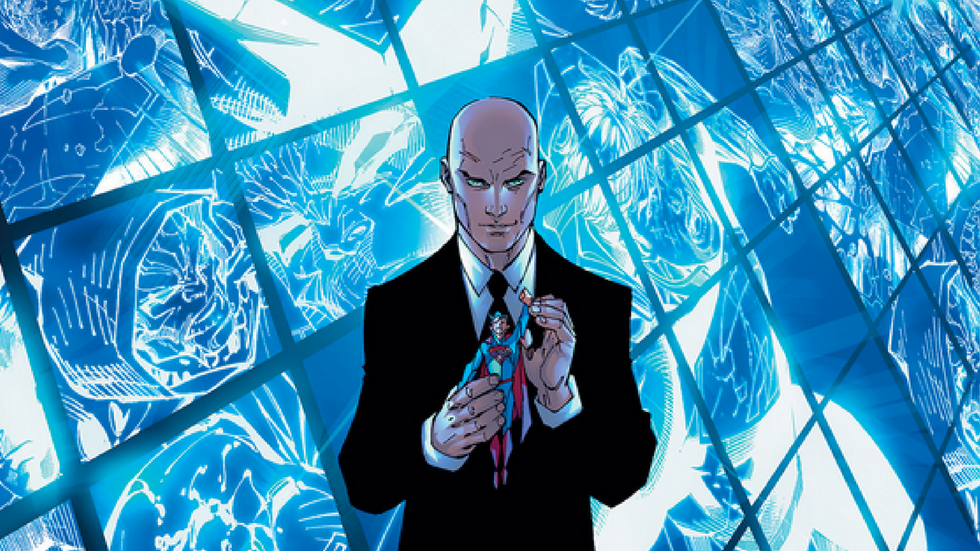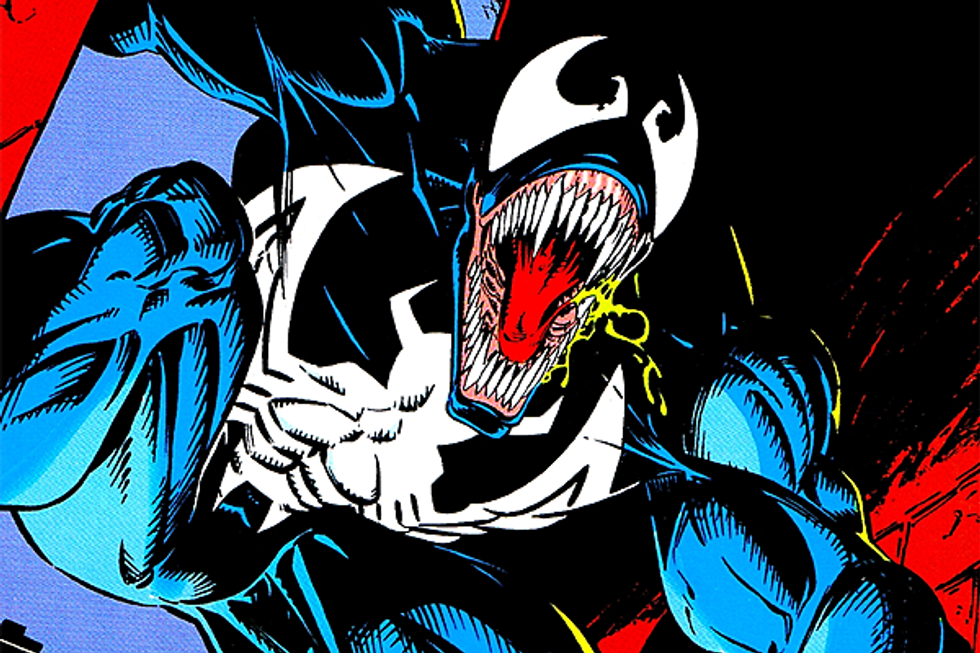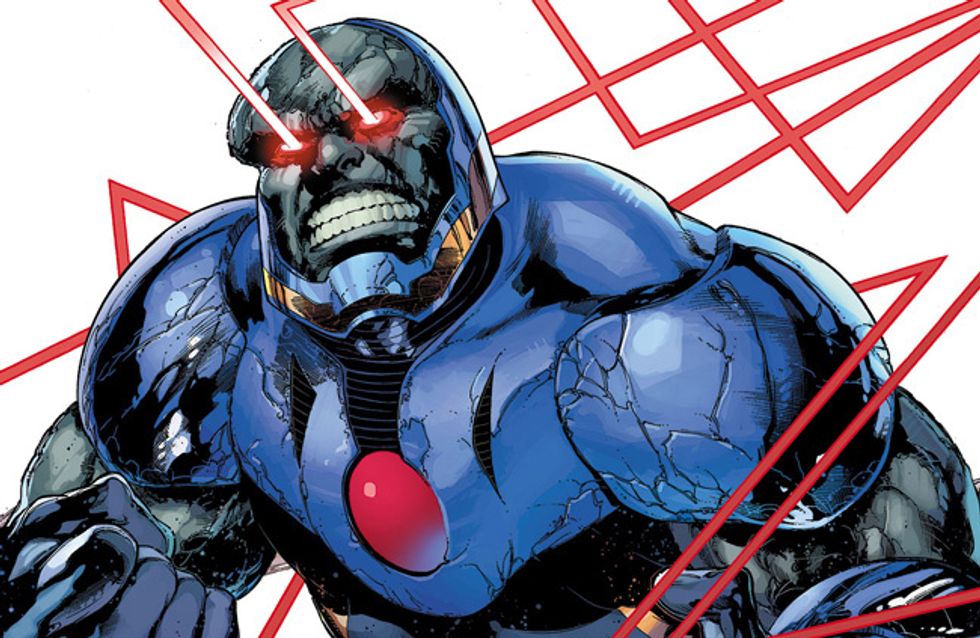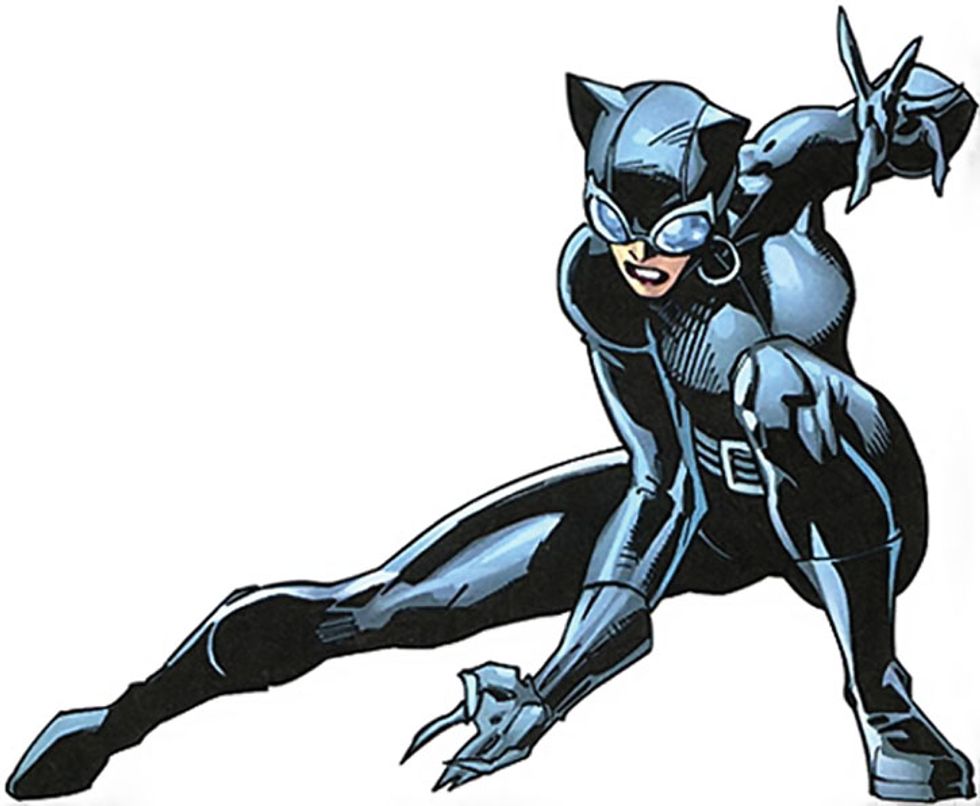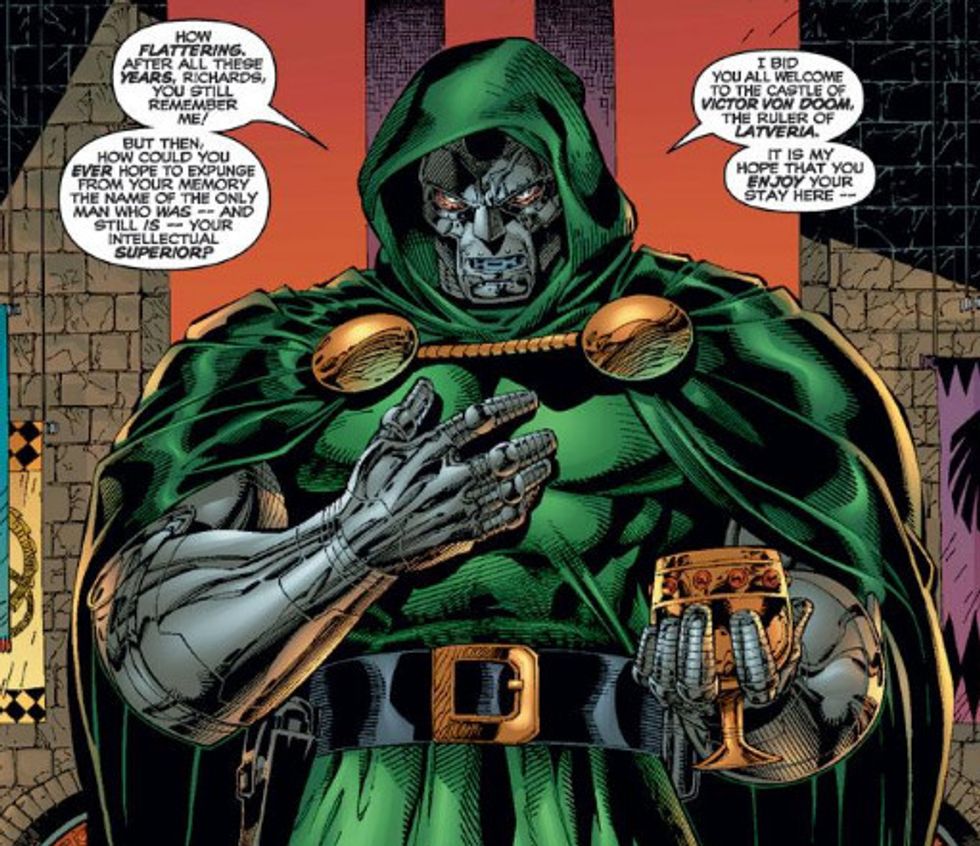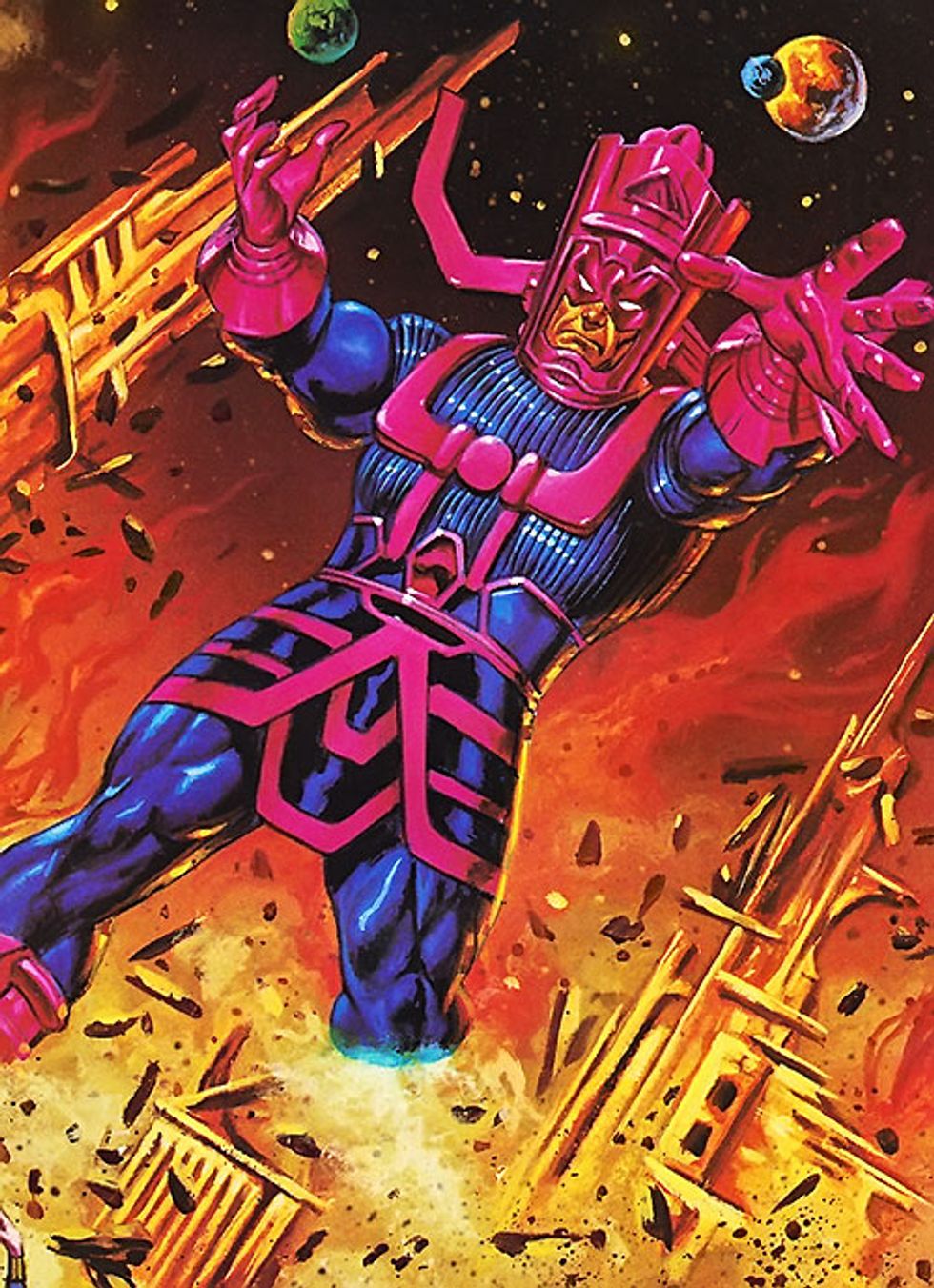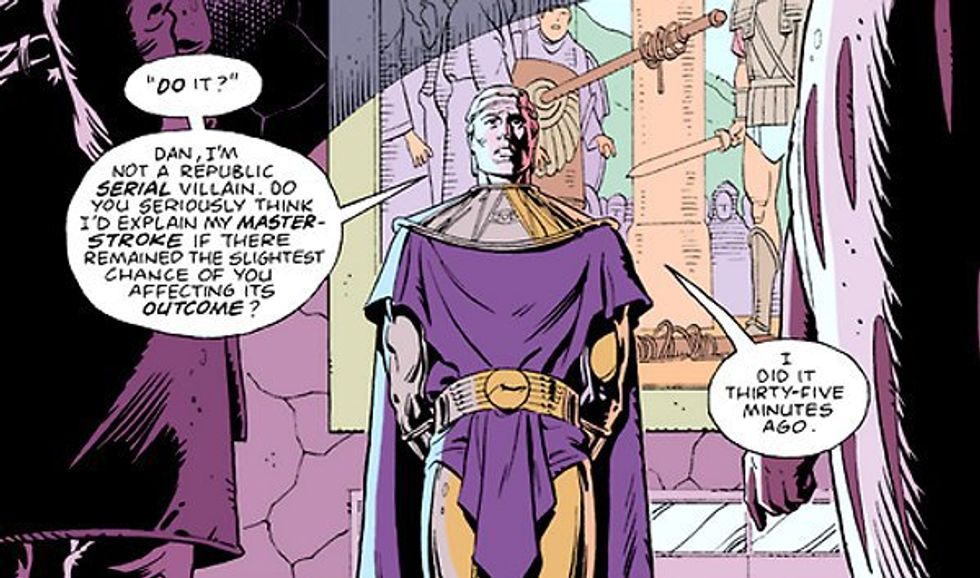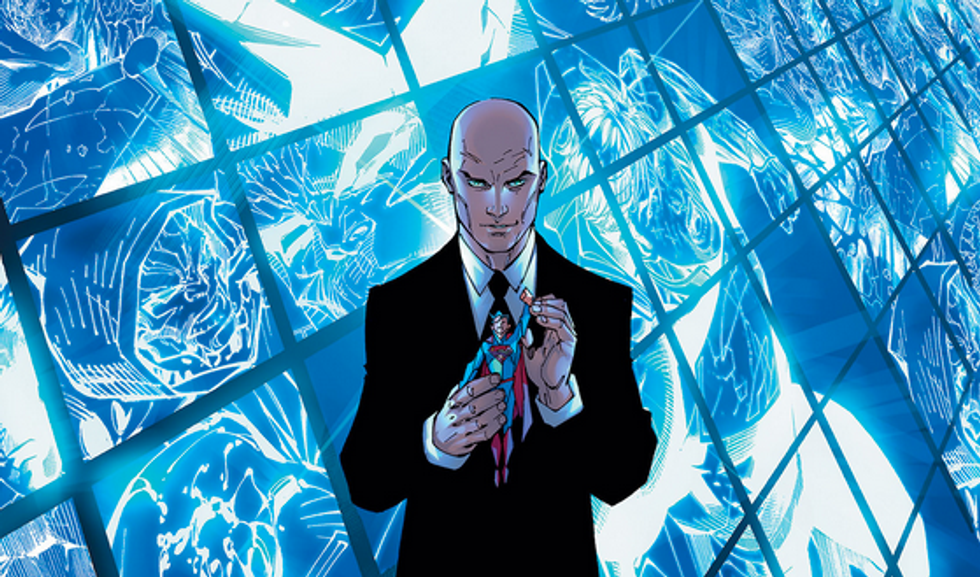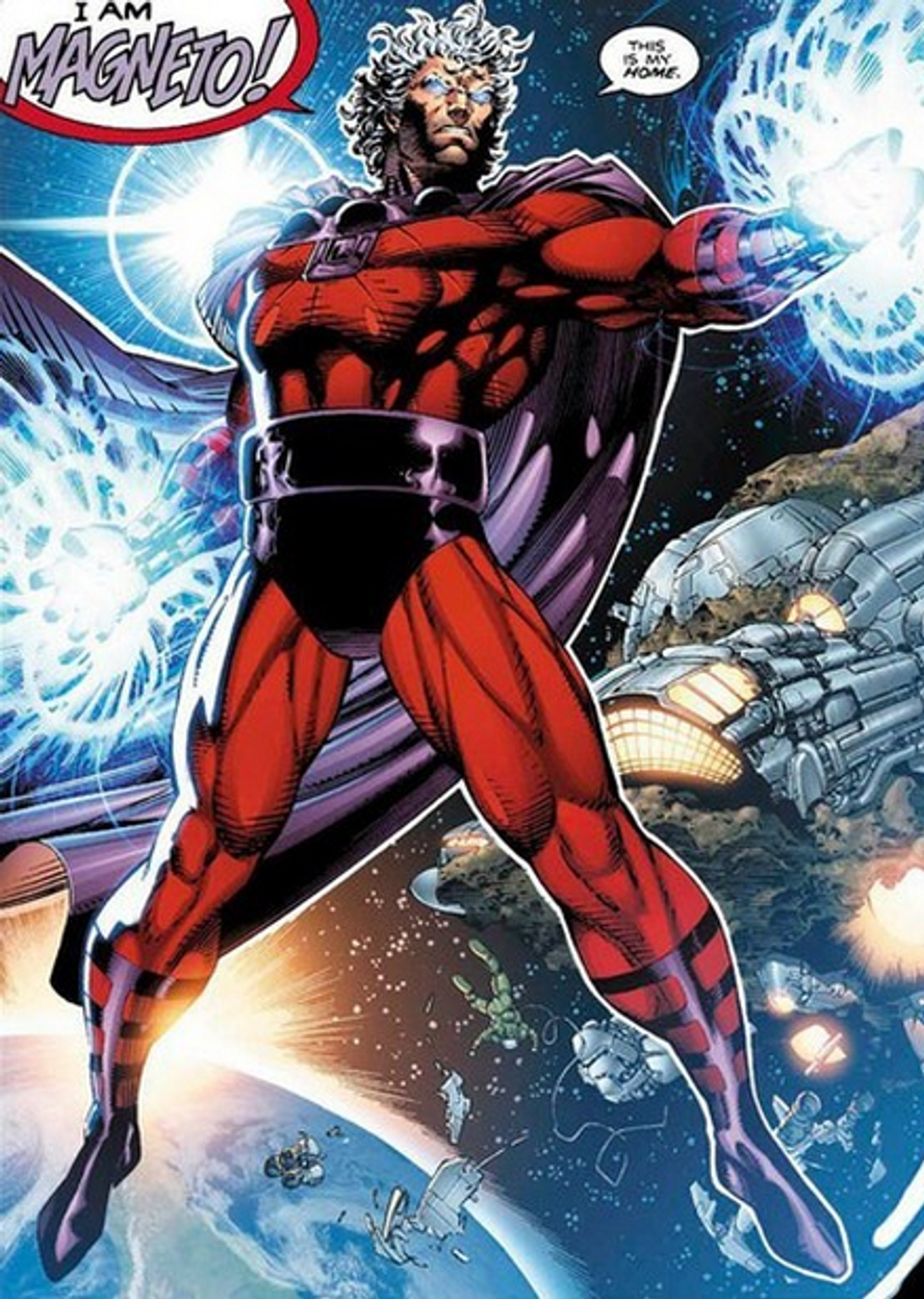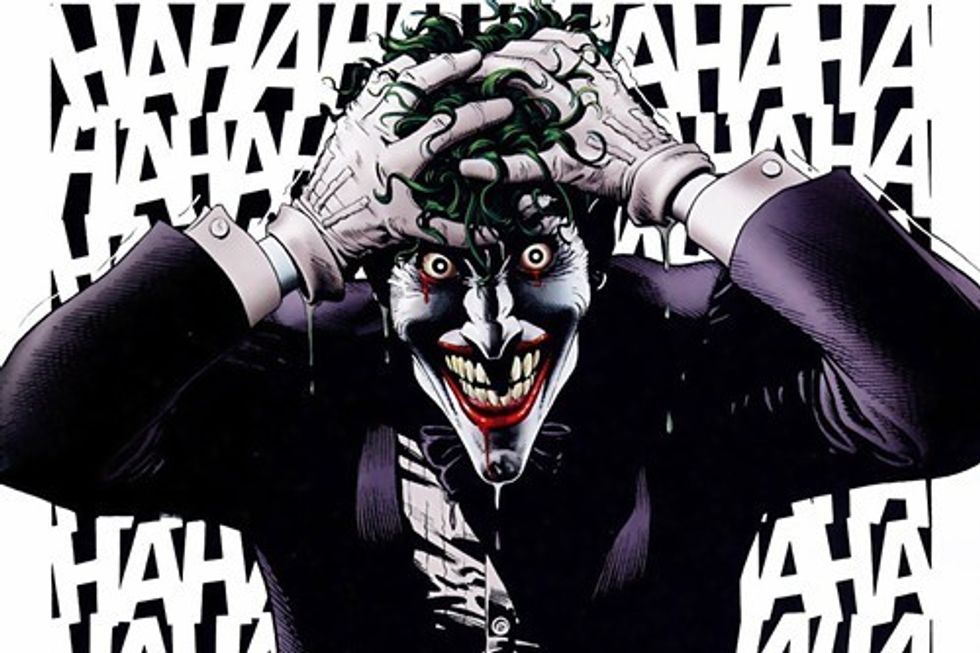Batman sometimes refers to criminals as a “cowardly and superstitious lot.” Unfortunately, for the greater 99% of evildoers in comics, cowardice and superstition aren’t really common. From ninjas and crime lords to demons and aliens, comic book villains are almost always larger-than-life characters who can more than match their do-good nemeses.
This list celebrates the ten best of these villainous individuals, recognizing their lasting appeal, their original and inspired characteristics, and of course their capacity for being bad. Here are my top ten comic book villains!
10. Edward Brock/Venom
First Appearance: “The Amazing Spider-Man #300” (1988)
Fun Fact: This iconic Spider-Man villain was created by comic book writer and artist Todd McFarlane, who is also known for creating the supernatural anti-hero known as Spawn.
Many individuals across the Marvel Universe have wielded the dangerous power of the Venom symbiote, but none of its hosts have been more memorable or infamous than disgruntled ex-reporter Eddie Brock. Fueled by his hatred for both Peter Parker and Spider-Man, Brock was the perfect candidate for bonding with the alien creature, which also hated Spider-Man for rejecting it. Together, the pair are Venom--a deadly, psychopathic monstrosity with all of Spider-Man’s abilities and none of his compassion or restraint. Venom is the ultimate antithesis to Spider-Man’s heroics; a dark mirror perfect for battling the web-slinger on the psychological as well as the physical level.
9. Darkseid
First Appearance: “Forever People #1” (1971)
Fun Fact: Darkseid’s presence in the DC Cinematic Universe is heavily hinted at by Easter Eggs found in “Batman V Superman: Dawn of Justice” and the plot synopsis of the upcoming “Justice League” film.
The ruler of the fire pit-infested planet known as Apokolips, Darkseid lives only to conquer and slaughter, obsessed with discovering the secret of the elusive Anti-Life Equation. That quest in itself is a testament to Darkseid’s character; all life that refuses to swear undying allegiance to his cause is worthless and fair game for extermination. This clever and manipulative dictator is also not beyond using torture, mind control and other heinous methods to utterly break and/or manipulate his foes. And when all else fails, he can rely on his Omega Beams: projected lasers with the power to outright disintegrate matter. From the Justice League to the super-powered society known as the New Gods, nobody is safe from Darkseid’s insidious plans nor his terrifying power.
8. Catwoman
First Appearance: “Batman #1” (1940)
Fun Fact: For Frank Miller’s acclaimed “Batman: Year One,” Catwoman was reimagined as a prostitute looking to make a name for herself by tearing into the criminal underworld.
Though these days DC Comics seems to want to paint the character in a more anti-heroine light, this femme fatale is in her element when she’s giving Batman the old cat-and-mouse game. Ambiguous in her morals and motives, Catwoman provides a compelling foil for Batman, as she is free from rigid ideals like justice or the greater good--a fact that she loves and doesn’t mind flaunting in front of Batman. Also of note is her complex love-hate relationship with the Dark Knight, which only serves to grow more complicated with time but usually provides for interesting storylines or plot threads. A landmark female character in comics and one of the most easily recognizable comic book characters of all time, Catwoman is a cat burglar that’s a cut above the rest.
7. Doctor Doom
First Appearance: “Fantastic Four #5” (1962)
Fun Fact: Doom is the leader of a fictitious European country known as Latveria, which is surprisingly prosperous.
The true key to success is proving you’re better than the other guy--at least, that’s what Doctor Doom thinks. Possibly the biggest egotist in the entire Marvel Universe, Doom’s entire character is based around the fact that he believes he is smarter, stronger and a better leader than everyone else in the room. He’s challenged cosmic beings, a whole slew of superheroes, gods and other scientists, managing to outwit and defeat quite a number of them. Sure, he loses to the likes of the Fantastic Four often, but even when he loses, he’s never beaten, continuing to make contingencies and new plots for conquest. From developing robot decoys of himself to his mastery of magic (yes, really), Doctor Doom is a force to be reckoned with, and his arrogant determination is something to be admired if not respected.
6. Galactus
First Appearance: “Fantastic Four #48” (1966)
Fun Fact: Galactus selects "Heralds" to find worlds for him to consume. While the most recognizable of these Heralds is the Silver Surfer, other Heralds have included heroes like the X-Man Dazzler, Thor, and even Deadpool.
Don’t let the outlandish outfit fool you; this titanic extraterrestrial has a hunger for only one thing in the universe, and that’s planets. A side effect of his cosmic origins and physiology, Galactus must consume entire worlds to keep himself alive. If that weren’t scary enough, he wields the Power Cosmic, a god-like array of abilities that makes most heroes look practically useless. How so? Well, for some perspective, he can transmutate matter, use telekinesis, project energy, create force fields and even resurrect the dead. Rest assured, the infamous Devourer of Worlds has more than enough power to strike fear into the hearts of heroes from across the universe.
5. Norman Osborn/Green Goblin
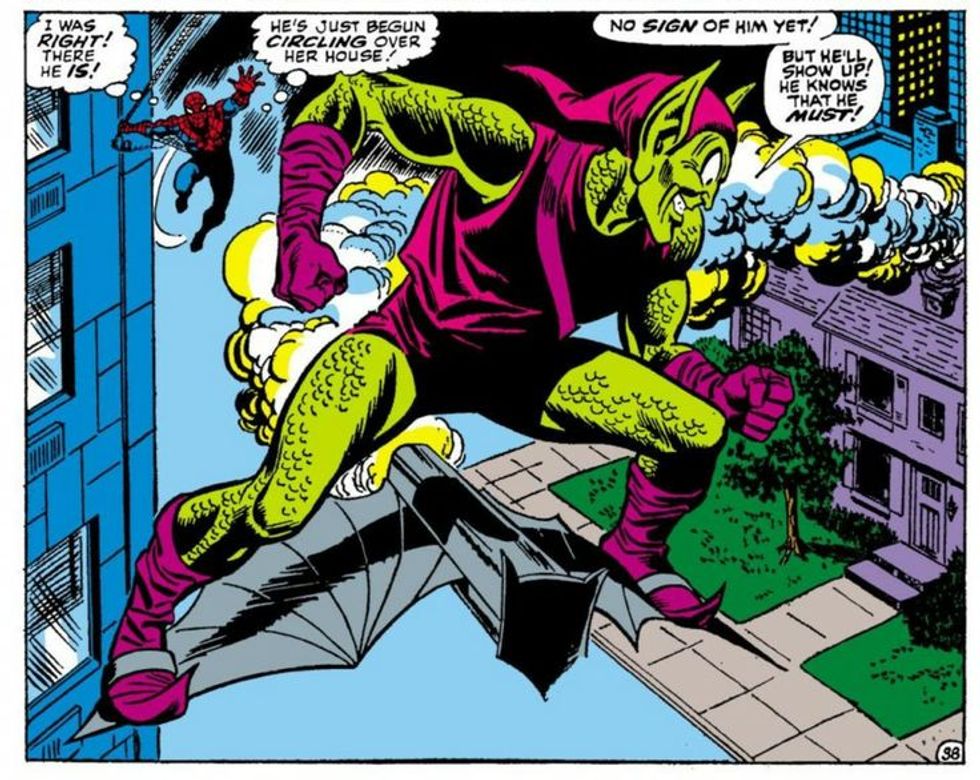
Fun Fact: Stan Lee actually never thought about who the Goblin was supposed to be when he was first conceived. The revelation that he’s Norman Osborn did not come into play until years after Norman became relevant to the Spider-Man mythos.
A scientist turned supervillain, Norman Osborn is living proof of what happens when science goes too far. After testing an experimental serum on himself, Osborn gained great strength, speed, and awareness--at the cost of his sanity. That serum unleashed a deadly persona from within Osborn’s psyche known as the Green Goblin: a murderous criminal with no regard for human life and a burning hatred for Spider-Man. While Osborn has made trouble for other heroes in the Marvel Universe, it’s his constant battle with Spider-Man as the Green Goblin that makes him compelling. Osborn has proven time and again that he’s perhaps Spider-Man’s deadliest foe, combining intelligence with unencumbered madness to truly test the hero’s limits.
4. Ozymandias
First Appearance: “Watchmen #1” (1986)
Fun Fact: His name is derived from the Percy Bysshe Shelley poem of the same name, which plays a huge thematic role in “Watchmen.”
Do the ends ever justify the means, even if those means are technically immoral? For the brilliant businessman and former superhero, Adrian Veidt--once known as Ozymandias--that answer is a definite yes. While Ozymandias might not be the strongest or most fearsome-looking character on this list, he is no less capable of making big waves with his actions. At the end of Alan Moore’s “Watchmen,” he does just that, committing mass murder for the sake of uniting the world’s nations. In the end, the world does come together, but we--along with the book’s other characters--are left to ponder whether or not it was all worth the lives lost. The character’s extreme but intriguing personal philosophy helps to add more layers of depth and complexity to “Watchmen,” an already dense and rich book, and makes readers consider morality in ways most superhero comics don’t really touch.
3. Lex Luthor
First Appearance: “Action Comics #23” (1940)
Fun Fact: Luthor was the President of the United States for a time, using his presidential authority and influence to turn the world and its superheroes against the duo of Superman and Batman.
A survivor of an abusive family in a lower-class environment, Lex Luthor is a firm believer in the image of the self-made man. A brilliant billionaire and inventor, Luthor seeks to make the world a better place through his immense wealth, resources, and connections. All of that is challenged by Superman, a godlike being whose practically perfect image is in conflict with Luthor’s humanist ideals. Thus, the thing that defines Luthor is his quest to prove that you don’t need to be a superhero or an invincible alien to change the world. It’s this single-minded determination that fuels his often insane schemes to rid himself of his Kryptonian nemesis and his costumed buddies, and it’s the reason why we bother following along with the bald-headed egomaniac’s antics.
2. Magneto
First Appearance: “The X-Men #1” (1963)
Fun Fact: Magneto’s children are the mutants Quicksilver and Scarlet Witch, who both eventually went the way of the hero and joined the Avengers.
Some villains aren’t evil by choice, but by circumstance. The mutant Master of Magnetism, Magneto, is one such example. Being the number one adversary of Charles Xavier and his X-Men, Magneto is technically a villain, but for him--and the reader--his morals aren’t so cut-and-dry. A survivor of the Holocaust, Magneto was never a stranger to prejudice; seeing his fellow mutants discriminated and vilified only strengthened his resolve to end mankind’s intolerance by force. More often than not, Magneto is actually quite sympathetic for a villain, with the understandable hardships of racism clearly at the forefront of his ideology. Grounded and relatable, Magneto is one of the best comic book villains because he defies the trope of the generic big bad, challenging readers to consider whether there are really any heroes or villains in matters of social justice.
1. The Joker
First Appearance: “Batman #1” (1940)
Fun Fact: In the popular 1990s television show “Batman: The Animated Series,” The Joker was voiced by Mark Hamill--who seasoned “Star Wars” fans know as the one and only Luke Skywalker.
A constant thorn in the Dark Knight’s side since day one, the enigmatic Joker proves you don’t need much of a backstory or motive to make for a compelling character. The Joker lives for sheer, unadulterated chaos and anarchy--nothing more, nothing less. There is no big picture he fights for, there is no deep personal reason for causing catastrophe; there is only the goal of completely robbing society of its illusions and allowing injustice and evil to run free. In this fashion, The Joker, like Batman, becomes more of an idea than a person. And with that status, he makes up for his lack of powers by using ideology to put his foes in mental and moral checkmate--to show them that saving the day isn’t as simple as throwing bad guys in jail. Especially in the best stories featuring the character, the seemingly unbeatable virtuousness of the hero has consequences, limits, and repercussions--and to the Clown Prince of Crime, that’s the greatest joke of all.

